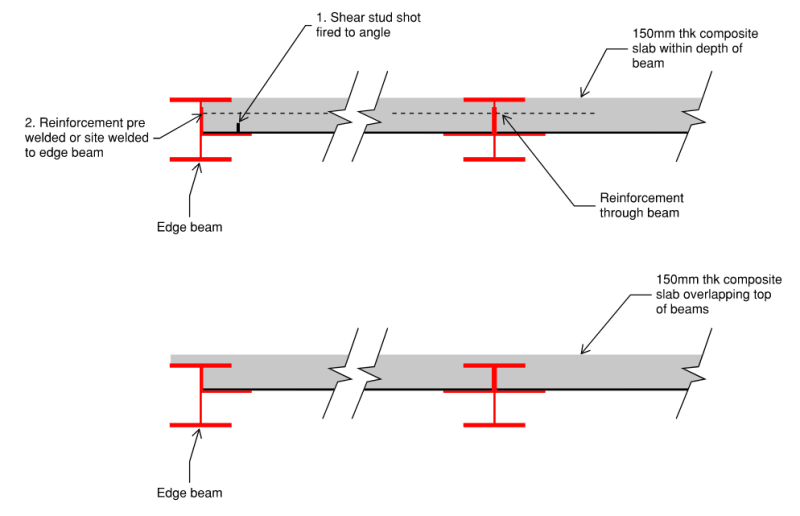bricksandmortar
Structural
- Jun 23, 2015
- 8
I am using a composite slab within the depth of a steel beam supported on angles but I am concerned if this will be sufficient to provide good diaphragm action. If the slab is fully within the depth of the beam would providing either shear studs or rebar welded to the webs be sufficient to provide the diaprhagm action? For the internal beams I am proposing to have rebar through the webs to connect the slabs on each side. I could extend the slab above the top flange of the beam and have the rebar continuous over but it would be preferable to keep it within the depth of the beam for the Architectural requirements. I have sketched some details of the options below:



